What You Need for Effective Meal Planning
Yo!! It’s time for our meal planning series again. I hope you enjoyed our first two articles. In case you haven’t checked them out yet, we talked about why we should do meal planning as well as the three types of meal planning. Many of you liked meal planning type #3 – Leftover Hacks. We must try that together sometime soon. As for today, it doesn’t matter which type of meal planning you choose, we are going to get you prepared.

In order to do meal planning effectively, we’ve come up with a list of the most important things to have. Don’t worry! We are not going to ask you to buy a bunch of stuff. Most likely, you’ll be working with what you already have.
A Clean & Organized Fridge
First things first, clean and organize your fridge to make sure that you’ve got some space for fresh ingredients. If you’d like to do a little batch cooking beforehand, you’ll need some space for pre-prepared ingredients. What do you see? Did you see an opened jar of something sitting in the back corner? If you haven’t touched it for two weeks, chances are you are not going to use it for another two weeks. Just toss it.
Instead of bending over and pushing everything aside in order to find what you want, an organized fridge will save you all that effort and you will know exactly where stuff goes. In other words, it’ll help you be efficient in the kitchen. Here are a few food storage techniques to keep in mind when you tackle your fridge.
Based on the temperature the foods need to be cooked to, we are going to work our way from the top down to the bottom. The lower temperature the foods require to cook, the higher they should go in your fridge. For example, cooked foods or ready-to-eat foods should go on your upper shelves. Meat and chicken need to be cooked to the highest temperature, so they should ideally go to the bottom of your fridge. If juices drip, they won’t contaminate the whole fridge. This is how professional kitchens organize their fridges, with food safety in mind. So let’s learn a few things from them.
- The Upper Shelf: Leftovers, drinks, and ready-to-eat foods (like yogurt, cheese, and deli meats).
- Middle Shelves: Eggs do best where the temperature is most consistent—on the middle shelf. Store in the original cartons (don’t transfer to the fridge egg container).
- The Lower Shelf: Raw ingredients slated for cooked dishes.
- The Bottom: Milk should be stored here all the way in the back where it’s coldest. Yogurt, sour cream, and cottage cheese fare best on the bottom shelf for the same reason as well as freshly squeezed juice.
- The Drawers: Drawers are designed to hold produce at specific humidities, it makes sense to store fruits and veggies there. Most fridges have two drawers side by side at the bottom. You can use one drawer for fruits and veggies only, make the other one exclusive for raw meats and make sure to clean the meat drawer often. If that’s not the layout in your fridge or you only have one drawer, you can improvise your own meat drawer by using a plastic bin so that it’ll catch any accidental drips.
- The Doors: The refrigerator door is the warmest part of the fridge, so only condiments should go there. Butter, soft cheese, condiments, oils, pasteurized orange juice can safely be stored on the doors.
*For effective meal planning, we will be storing our pre-prepared ingredients in the middle and the lower shelves of your fridge.
Food Containers, Bags & Labels
You’ve cleaned and organized your fridge, excellent! Store it up with the ingredients required by your chosen dinner recipes for the week. Now, let’s prepare some food containers, bags, and jars. You don’t have to bust them all out yet and you don’t need a lot. A few of each should put you in a good position. Just remember that food containers and bags are going to be far more effective for storing pre-prepared ingredients or leftovers than your serving bowls when it comes to meal planning.




Say that you do meal planning type #2 – prepping ahead / batch cooking. Once prepared food goes into the containers or bags, you’ll want to know which recipe it’s for. This is why labeling is important. A post-it note can do a helluva good job on this specific matter. My previous real estate mentor in San Francisco demonstrates how it’s done effectively. Check out Sabrina’s fridge below. You don’t have to be this hardcore, but you get the idea.
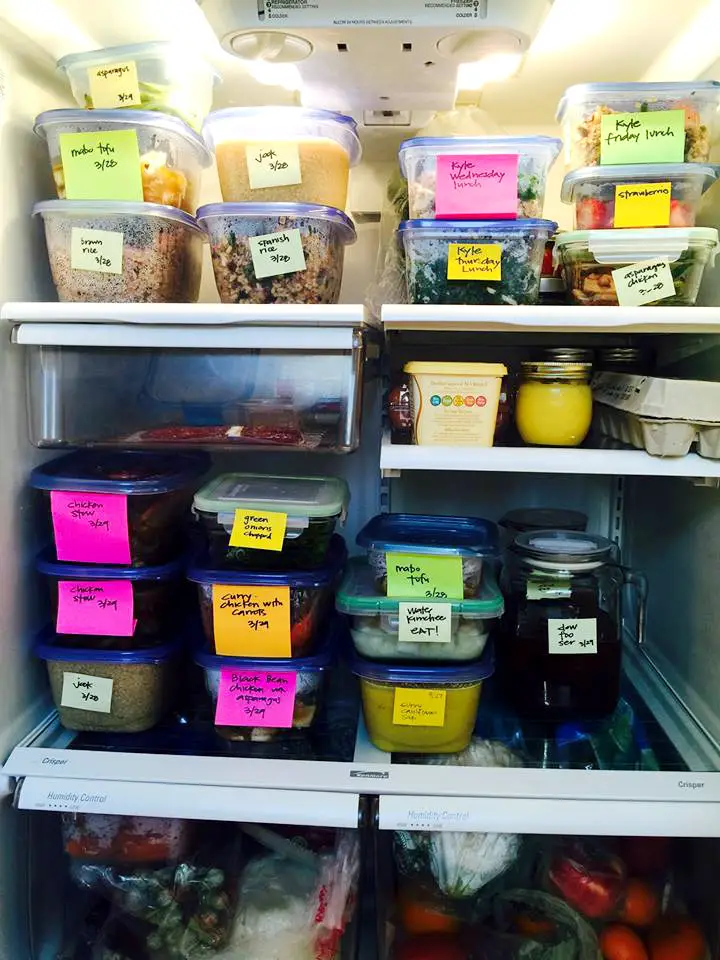
Photo by Sabrina Gee-Shin
Other physical items you need are some kitchen essentials that most likely you already have. Now, the question is – are you mentally prepared?
Prepping Ahead Funsies
Let’s get things straight. You’ll 100% create a crime scene in your kitchen if you prepare 4 or 5 meals ahead of time all at once. However, the trade-off is totally worth it, in my opinion. With pre-prep, it’ll significantly reduce the cooking time and the stress when you need to put dinner on the table after a long day of work. So pick a sunny afternoon and be patient (especially if it’s your first time).
Here’s how it looks like when I do my weekly meal prepping.
I’ll pour myself a glass of wine and place it at the corner of my kitchen counter where I won’t knock it off easily. Music is on! (I bet your music taste is better than mine, so I am not gonna bother going into the details.) Vegetables and fresh herbs are laying all over my counter; tomatoes are being roasted in the oven; minced garlic is in the food chopper; brown rice or quinoa are in the rice cooker; on the stove, I am making hard boiled eggs in a saucepan; my slow cooker makes the best chicken broth for me…My trash can never fill up so quickly.
Every now and then, I grab the wine in the corner and sip it. Sing a little and dance a bit with whatever music I put on. Sometimes I get a little over enthusiastic, the wine gets spilled. So you can image what kind of mess I create here. But you see, you get stuff chopped up, blended, cooked and packed up neatly while having fun, right?
So here you have it – things you need for effective meal planning.
- A clean and organized fridge to help you store food safely for longer.
- Food containers, bags and labels to separate ingredients for different recipes and if you can’t make the recipe as planned, just move it from your fridge to the freezer. You won’t forget what it is later since you’ve got the labels on.
- Time, patience and a mindset for fun.
Before we wrap up, we’ve put together a weekly dinner plan for you. Here comes StreetSmart Kitchen’s Meal Plan Week #3.

Gnocchi with Asparagus and Bacon
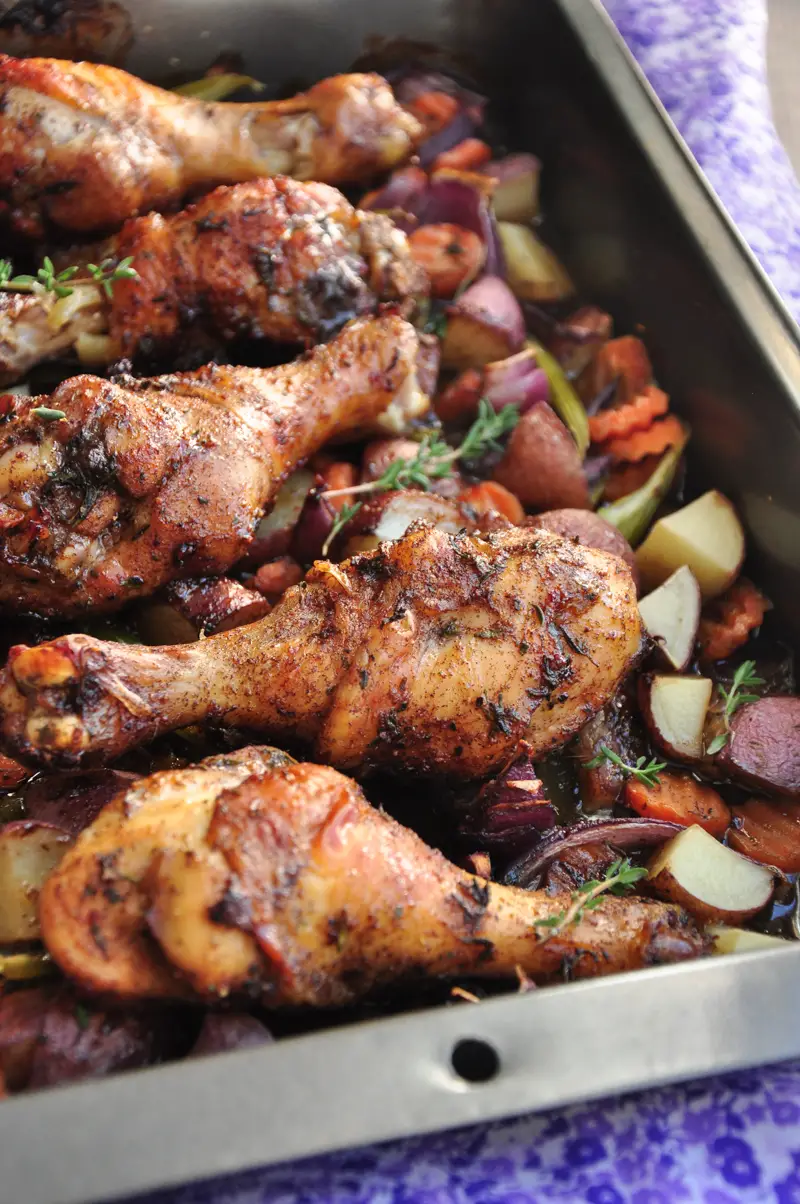
One-Pan Caribbean Jerk Chicken with Vegetables
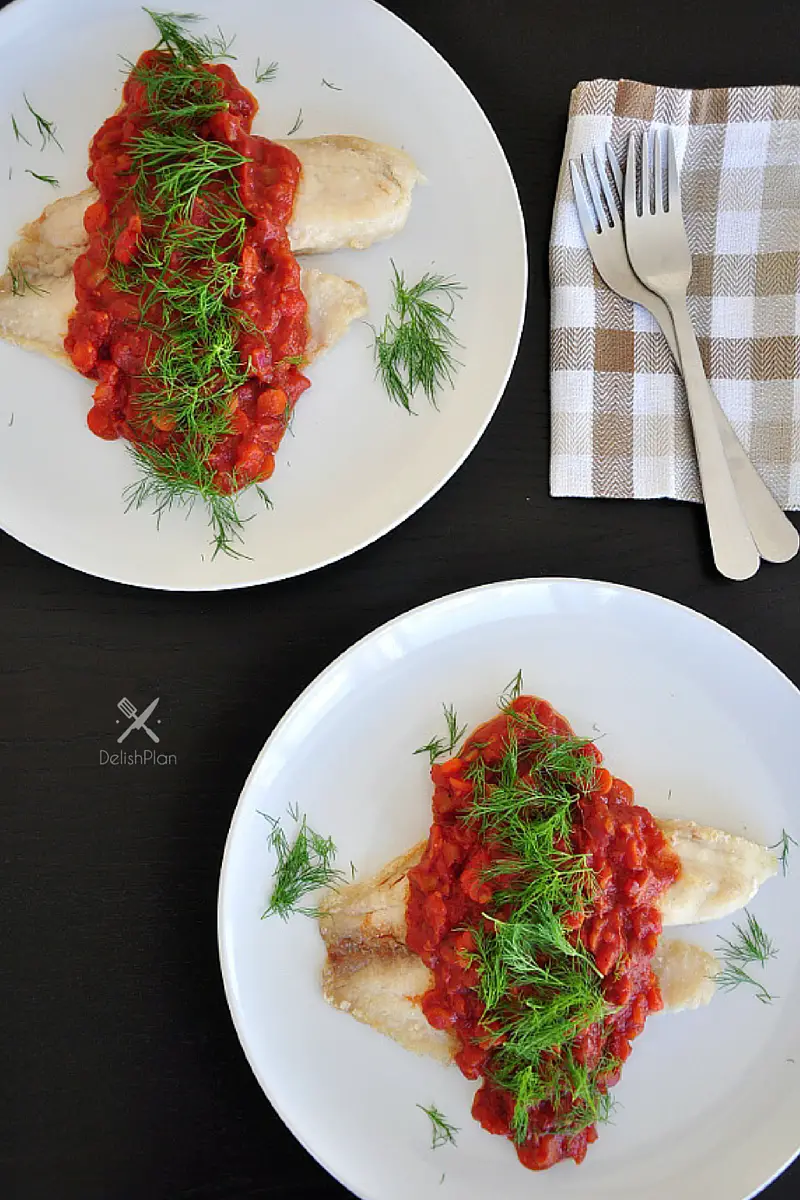
Tilapia Fillet with Tomato-Dill Sauce
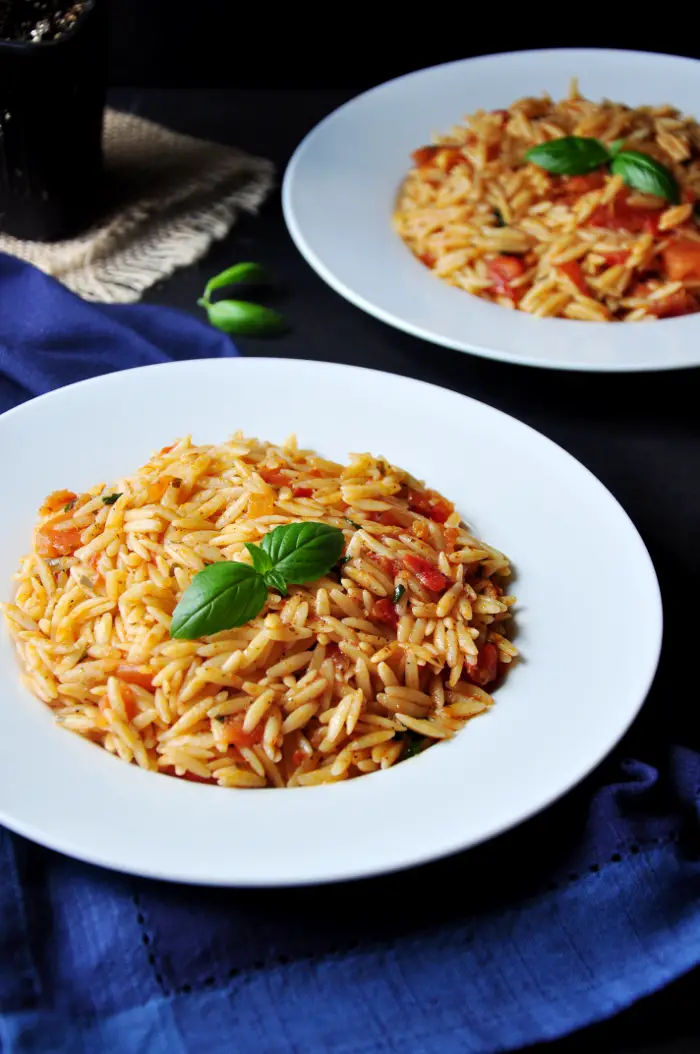
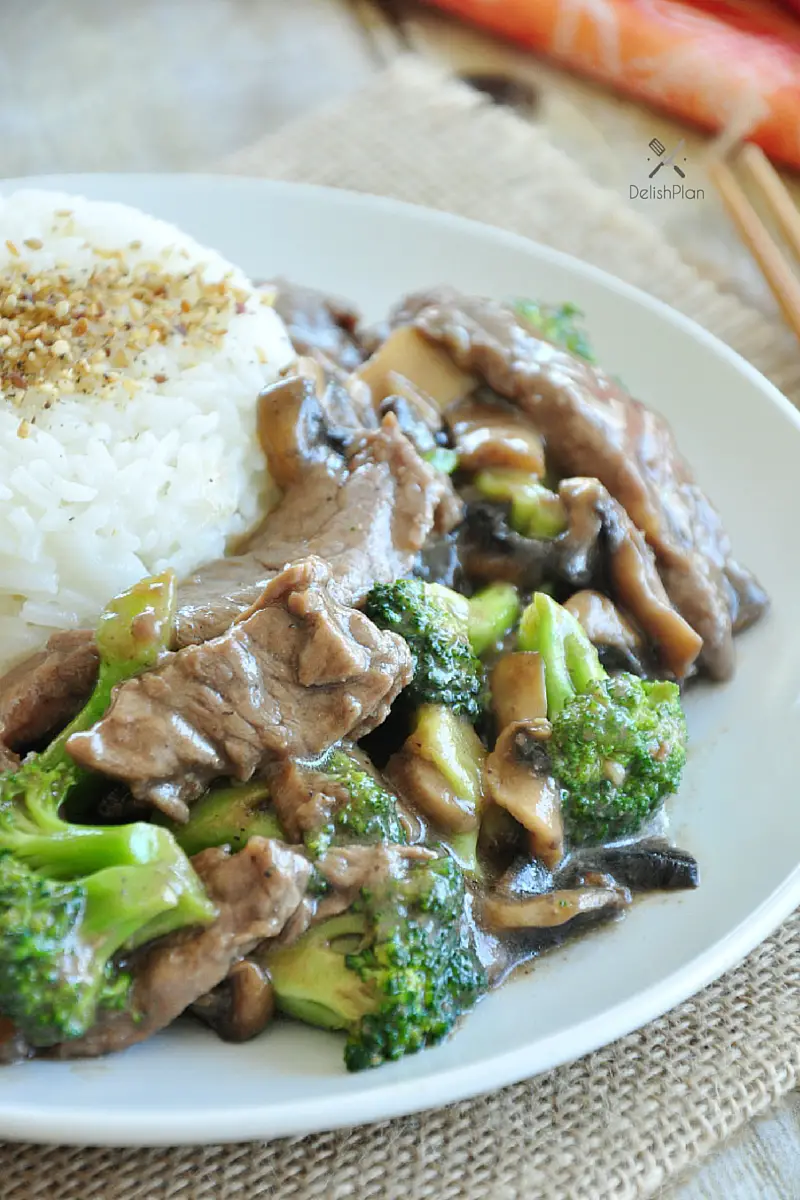
Red Wine Beef Broccoli with Mushroom to pair with rice
Chill, my friend! It’s the weekend. You may finish leftovers if there’s any; take your time to make some sweet treats; go check out the restaurants that you’ve been wanting to try.
Give yourself enough time to prepare for next week’s meals. Even if you don’t do pre-prep work, the basic meal planning of deciding what to cook and getting the groceries accordingly for the week can already put you ahead of the game, and if you do decide to go for prepping ahead, remember to have fun!
Now I’d like to hear from you. Have you ever done batch cooking or prep work beforehand? What do you do differently to make your meal planning effective? Leave a comment below and let us know.
About the Author
Sharon Chen is an Integrative Nutrition Health Coach and author of the Complete Sous Vide Cookbook. She believes food not only brings healing but also connection. As the creator of StreetSmart Kitchen, she aims to make meal prep easier than ever and help you find balance, ease, joy, and simplicity in the kitchen as you improve your well-being.




I am so intimidated by your fridge!! And so embarrassed for mine ;).
We meal prep every Sunday. It makes our week so stress free when it comes to dinners and such. I like having a lot of pre-cut foods on hands for easy snacking, too!
That’s awesome! Pre-cut vegetables are so handy. My favorites are onions, celery, and carrots. A mix of them works great for soups or stir fry. 🙂